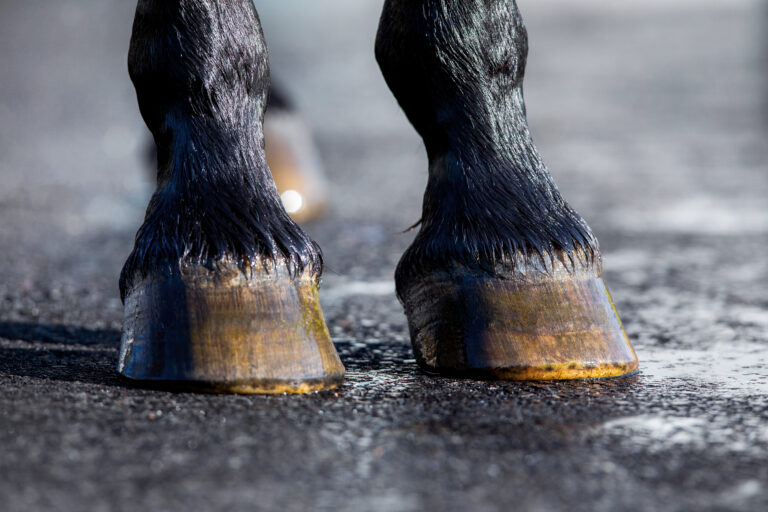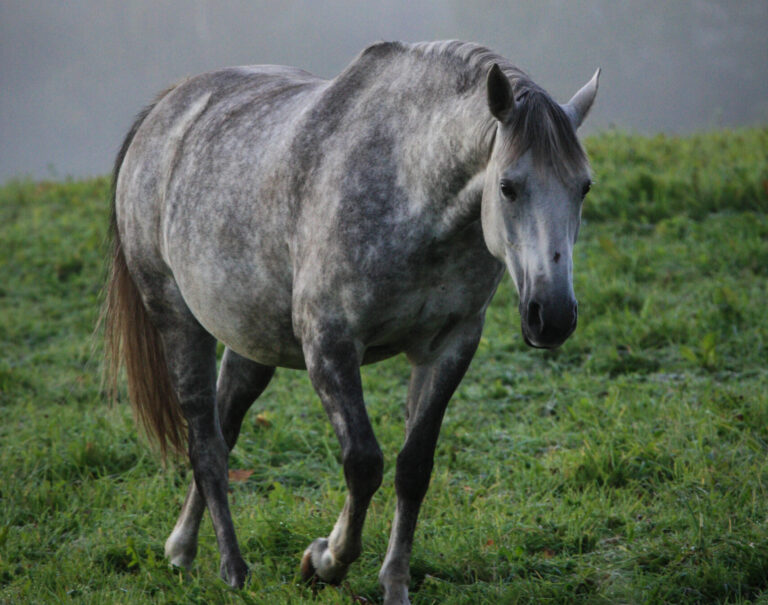
Pruritic skin diseases can “dramatically” impact the quality of life of both horse and owner, said Rosanna Marsella, DVM, Dipl. ACVD, from the University of Florida in her recent review on allergic skin diseases in horses. Insect bite hypersensitivity (IBH) and environmental allergies are the most frequent causes of pruritic skin diseases, she explained, noting that allergic skin diseases, which already occur commonly, are increasing in frequency.
What to Look For
To help determine the cause of pruritus, examine the horse and note the distribution of lesions. The face and ears are preferred feeding sites for many Culicoides spp., and those areas can have crusting, scaling lesions in addition to simply being pruritic. These lesions are most often caused by secondary bacterial infections, which most pruritic horses have. Cytology will often reveal eosinophils and Staphylococci, but mixed bacterial infections can occur in chronic cases.
Also look for yeast in the cytology samples, as these microbes can cause extreme pruritus. Always rule out mites such as Chorioptes and Psoroptes, as well.
Environmental Allergies: A Diagnosis of Exclusion
If you’ve cleared the infection and implemented effective insect control methods, any residual pruritus might be due to environmental or pollen allergies, said Marsella. Many horses can have both IBH and environmental/pollen allergies, the latter of which is a diagnosis of exclusion.
Unfortunately, there is no definitive test for allergies in horses. Further, said Marsella, a “positive” on allergy tests simply means the horse has immunoglobulin E (IgE) against a particular allergen. In the case of IBH, a horse might have IgE against insects; however, normal, nonsymptomatic (nonpruritic) horses might also have IgE against insects.
“Allergy tests, whether skin tests or serology tests, are not recommended for the purposes of establishing a diagnosis,” Marsella noted.
Treating Allergies
Insect bite hypersensitivity is best controlled with frequent application of insect repellents that contain a minimum of 1% pyrethrin. Stalling horses from dusk to dawn or moving horses to drier paddocks also helps. Fly masks and sheets, however, must be used with caution in hot, humid conditions because they can contribute to the horse developing a secondary infection. Fans and mosquito magnet machines might also prove useful.
Neither allergen-specific immunotherapy (ASIT) nor antihistamines are considered effective in horses with IBH. Instead, glucocorticoids are commonly prescribed medications for gaining control of the pruritus, with a goal of minimizing prolonged use.
Unlike IBH horses, those with environmental allergies (atopic dermatitis) might undergo allergy testing for the purpose of identifying sensitivities and formulating an ASIT. Further, horses with atopic dermatitis might respond to antihistamines, particularly if started before allergy season. Antihistamines such as hydroxyzine and chlorpheniramine can be combined with corticosteroids if needed.
Key Takeaway
Address infections with bacteria, yeast, and mites before assuming a pruritic horse has allergies. For IBH, corticosteroids play a key role in controlling clinical signs, whereas ASIT is recommended for environmental allergies (atopy).
Reference
Marsella R. Pruritic horse: Approach to allergic skin diseases in horses. Vet Clin North Am Equine Pract. In Press.
Related Reading
- The Future of Equine Infectious Diseases in a Changing Climate
- Equine Allergy Testing
- Improving the Welfare of IBH-Affected Horses
Stay in the know! Sign up for EquiManagement’s FREE weekly newsletters to get the latest equine research, disease alerts, and vet practice updates delivered straight to your inbox.




